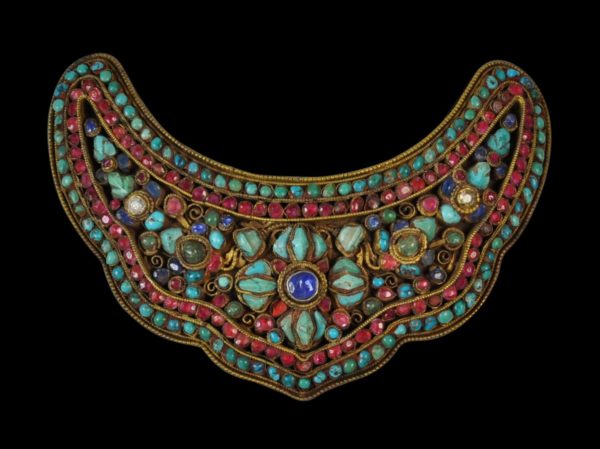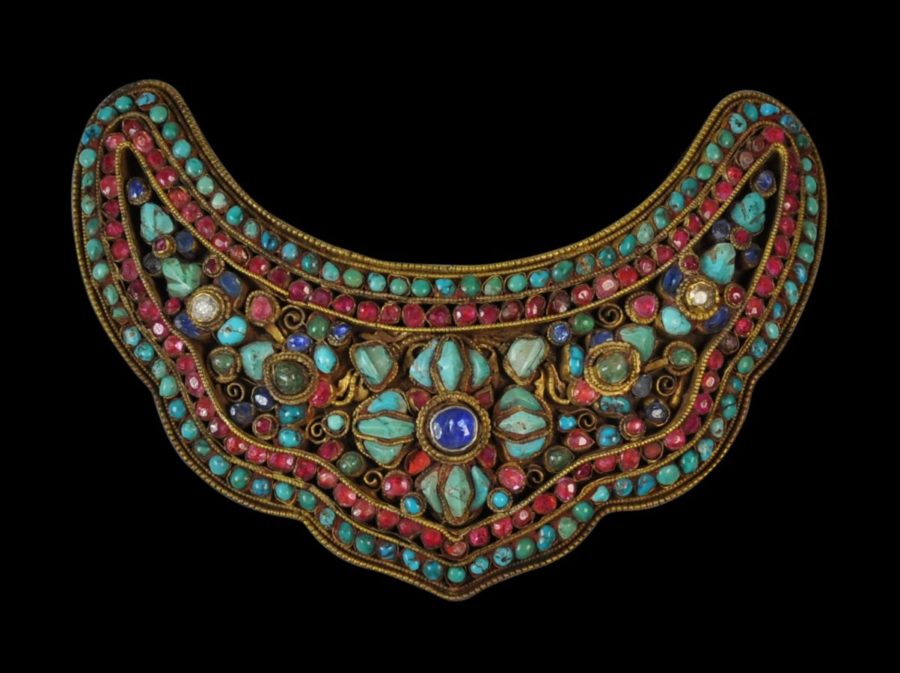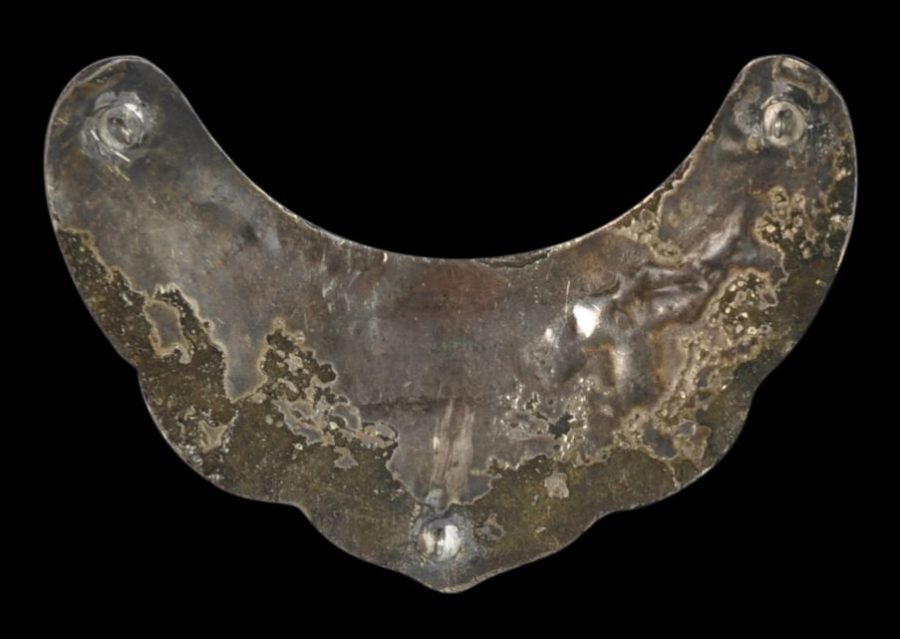This fine gorget necklace element or breastplate is decorated with semi-precious stones using jarao work. It was either intended to be worn by a person or was intended to decorate a religious statue most probably in a temple or monastery.
It is made of gilded (gold-plated) high-grade silver and set with a mixture of turquoise, rubies, white and blue sapphires, topaz and other stones. The stones are in cabochon and roughly faceted form. It is further decorated with applied twisted wire filigree spirals and edged with a thin border of pearled wire.
The central part of the element is decorated with a crossed vajra or visvawajra, representing the stability of the enlightened state.
The reverse has three lugs to allow suspension.
It dates to the 18th or 19th centuries and most probably was made by a Newari craftsmen either for a Nepalese or a Tibetan client.
According to Clarke (2004, p. 113) jarao work is a distinctive form of stone inlay decoration used by Newari craftsmen in the Kathmandu Valley. Its use was most prevalent in the 18th and 19th centuries although it appears on items from Nepal as early as the 12 century. It involves the use of a network of cloisons formed from this strips of wire or metal sheet to hold the stones, typically in combination with spiral filigree or pearled wire elements.
The necklace plate is in excellent condition with fine patina and obvious age. It is very wearable.
References
Clarke, J., Jewellery of Tibet and the Himalayas, V&A Publications, 2004.
Ghose, M. (ed.), Vanishing Beauty: Asian Jewelry and Ritual Objects from the Barbara and David Kipper Collection, Art Institute of Chicago, 2016.




